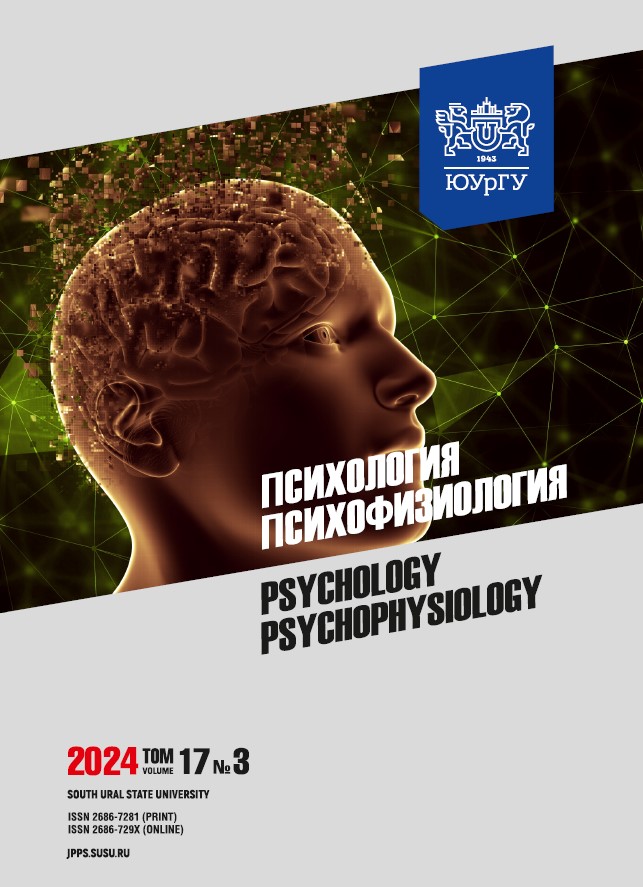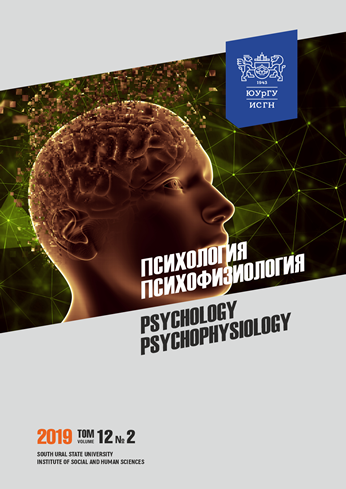The effect of gravity therapy and psychophysical regulation on force platform measurements in adults
Abstract
The fast pace of life, working conditions, age-related changes stemming from non-adherence to a healthy lifestyle, and the prevalence of vestibular and musculoskeletal disorders (muscle imbalance, scoliosis, etc.) collectively impact coordination abilities (coordination). This study aims to investigate the effectiveness of gravity therapy coupled with psychophysical regulation in enhancing coordination abilities in adults. Materials and methods. This study was conducted on a sample of 17 students of a professional development program (Research Institute of Olympic Sports, Ural State University of Physical Culture, Chelyabinsk). Volunteers practiced hatha yoga and underwent gravity therapy sessions. Postural stability was assessed using the “ST-150” system (Mera, Moscow, Russia). Personal and situational anxiety levels were evaluated using the Spielberger–Khanin State-Trait Anxiety Inventory. Data analysis was performed using Statistica 8.0. Results. Statistical analysis revealed significant changes in force platform measurements in the experimental group, indicative of improved visual and proprioceptive system performance in maintaining postural balance. At the same time, a reduction in situational and personal anxiety levels was recorded in the experimental group. Conclusion. The results obtained substantiate the effectiveness of gravity therapy and psychophysical regulation interventions in enhancing postural stability and mitigating anxiety levels in adults.
Downloads
References
2. Dautova M.B., Zhetpisbaeva G.D., Abisheva Z.S. et al. Influence of hypodynamia to human life. Mezhdunarodnyi zhurnal prikladnykh i fundamentalnykh issledovanii = International journal of applied and fundamental research. 2016;1-4:542–543. (in Russ.).
3. Baker J. Gait Disorders. American Journal of Medicine. 2018;131(6):602–607. DOI: 10.1016/j.amjmed.2017.11.051
4. Balsevich V.K. Ontokineziologiya cheloveka [Human Ontokinesiology]. Moscow. Theory and Practice of Physical Culture. 2000:275. (in Russ.).
5. Devishvili V.M. Bernstein. N.A., the founder of modern biomechanics. Natsionalnyi psikhologicheskii zhurnal = National Psychological Journal. 2015;4(4):74–78. (in Russ.).
6. Mohammad A., Thakur P., Kumar R. et al. Biological markers of yoga effects as comple-mentary and alternative medicine. Journal of Complementary and Integrative Medicine. 2019;16(1). DOI: 10.1515/jcim-2018-0094
7. Boulgarides L.K., Barakatt E., Coleman-Salgado B. Measuring the effect of an eight-week adaptive yoga program on the physical and psychological status of individuals with Parkinsons disease. A pilot study. International Journal of Yoga Therapy. 2014;24:31–41.
Schmid A.A., Miller K.K., Van Puymbroeck M., DeBaun-Sprague E. Yoga leads to multiple physical improvements after stroke, a pilot study. Complementary therapy in medicine. 2014;22(6):994–1000. DOI: 10.1016/j.ctim.2014.09.005
9. Ni M., Mooney K., Richards L. et al. Comparative impacts of Tai Chi, balance training, and a specially-designed yoga program on balance in older fallers. The Archives of Physical Medicine and Rehabilitation. 2014 Sep;95(9):1620–1628.e30. DOI: 10.1016/j.apmr.2014.04.022
10. Kinlein K., Bakakireva O.V. Boli v spine. Novyi podkhod k lecheniyu i profilaktike u vzroslykh i detei [Back pain. A new approach to treatment and prevention in adults and children]. Moscow. 1999:77. (in Russ.).
11. Myers, T. W. (1998). Kinesthetic dystonia: what bodywork can offer a new physical edu-cation. Journal of Bodywork and Movement Therapies. 1998;2(2):101–114. DOI: 10.1016/S1360-8592(98)80031-4
12. Balaban C.D. Neural substrates linking balance control and anxiety. Physiology and Be-havior. 2002;77(4-5):469–475. DOI: 10.1016/s0031-9384(02)00935-6
13. Viaje S., Crombez G., Lord S.R. et al. The role of concern about falling on stepping performance during complex activities. BMC Geriatrics. 2019;19(1):333. DOI: 10.1186/s12877-019-1356-z
14. Ainsworth B., Marshall J.E., Meron D. et al. Evaluating psychological interventions in a novel experimental human model of anxiety. Journal of Psychiatric Research. 2015;63:117–122. DOI: 10.1016/j.jpsychires.2015.02.001
15. Chen X.-P., Wang L.-J., Chang X.-Q. et al. Tai Chi and Yoga for Improving Balance on One Leg: A Neuroimaging and Biomechanics Study. Frontiers in Neurology. 2021;12:746599. DOI: 10.3389/fneur.2021.746599
References on translit
-Copyright (c) 2024 Psychology. Psychophysiology

This work is licensed under a Creative Commons Attribution-NonCommercial-NoDerivatives 4.0 International License.



